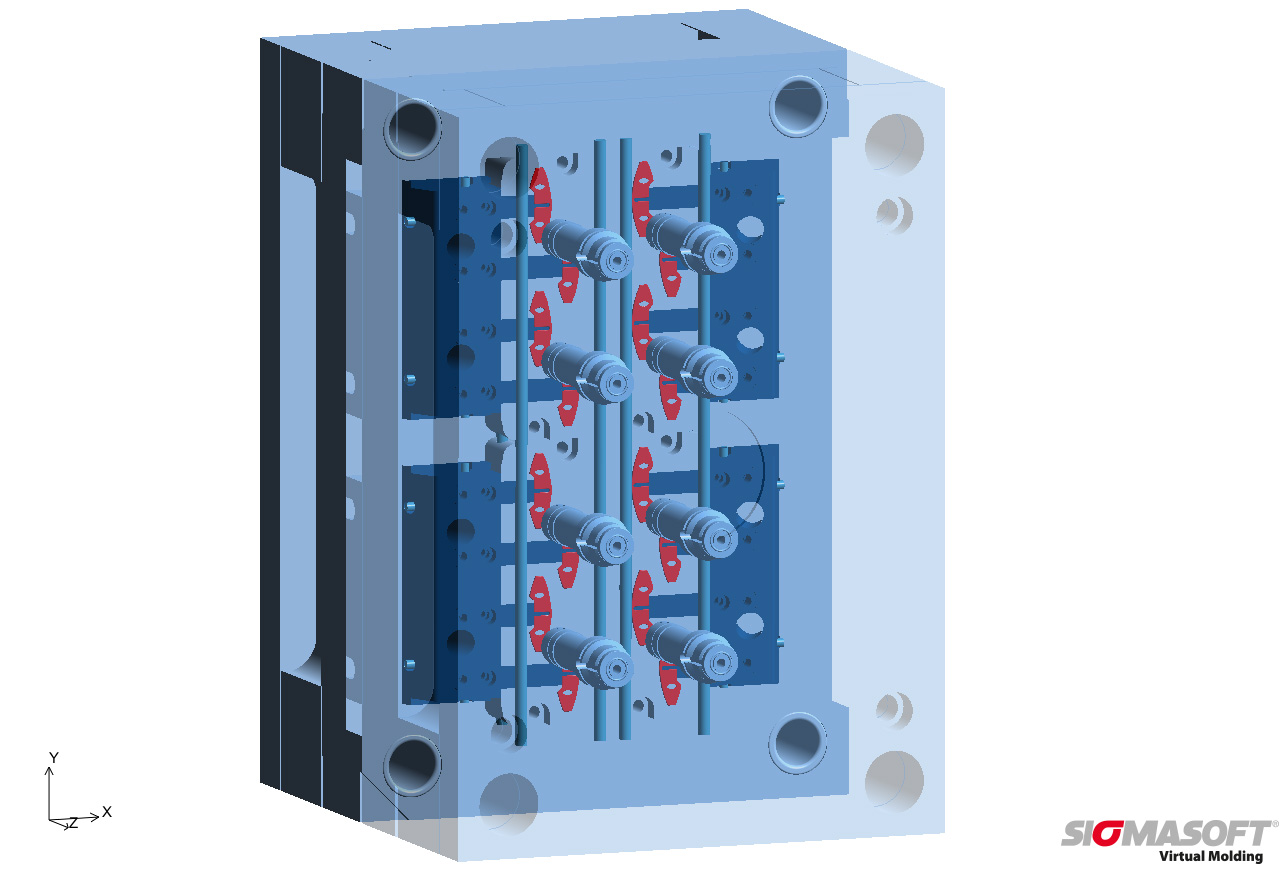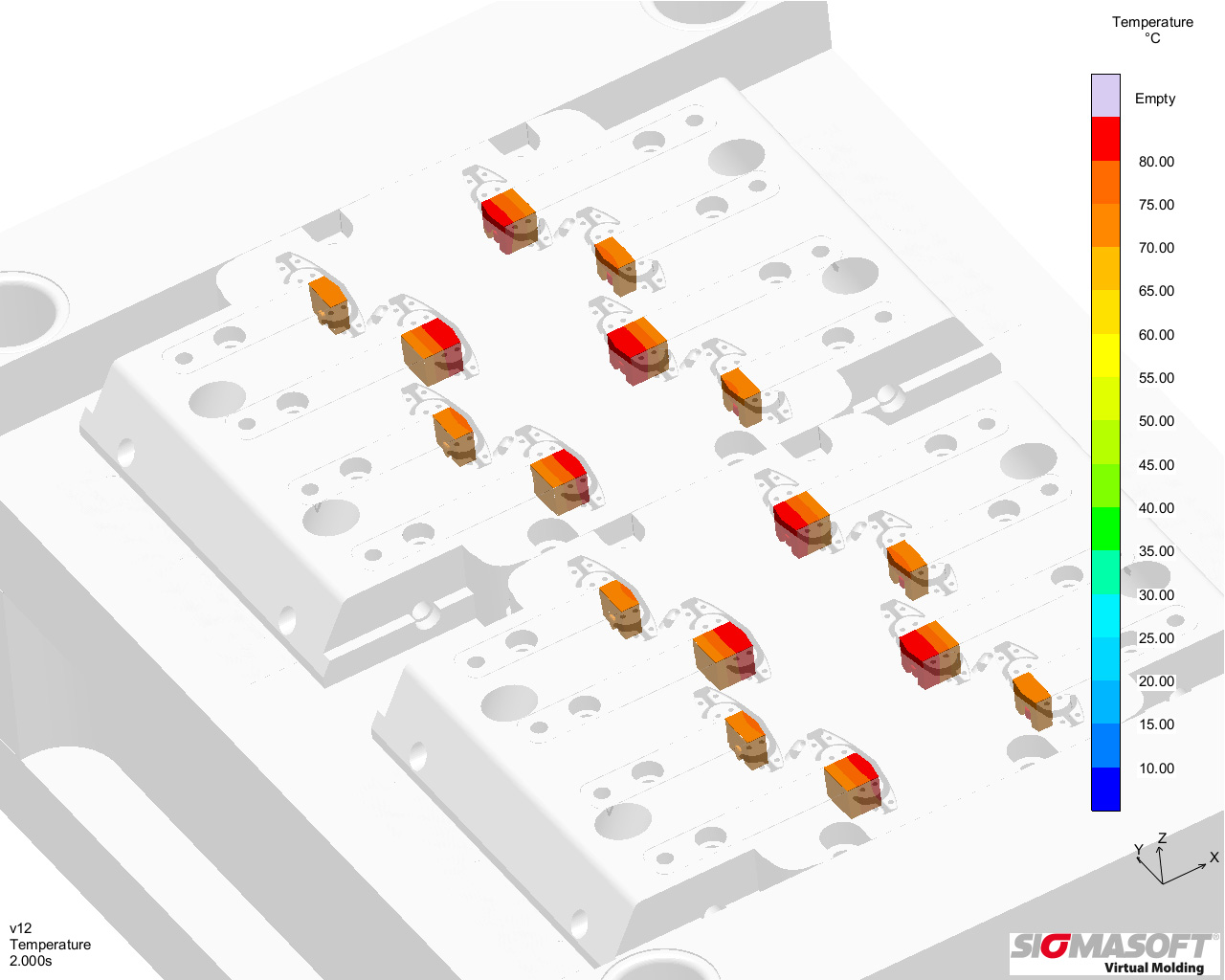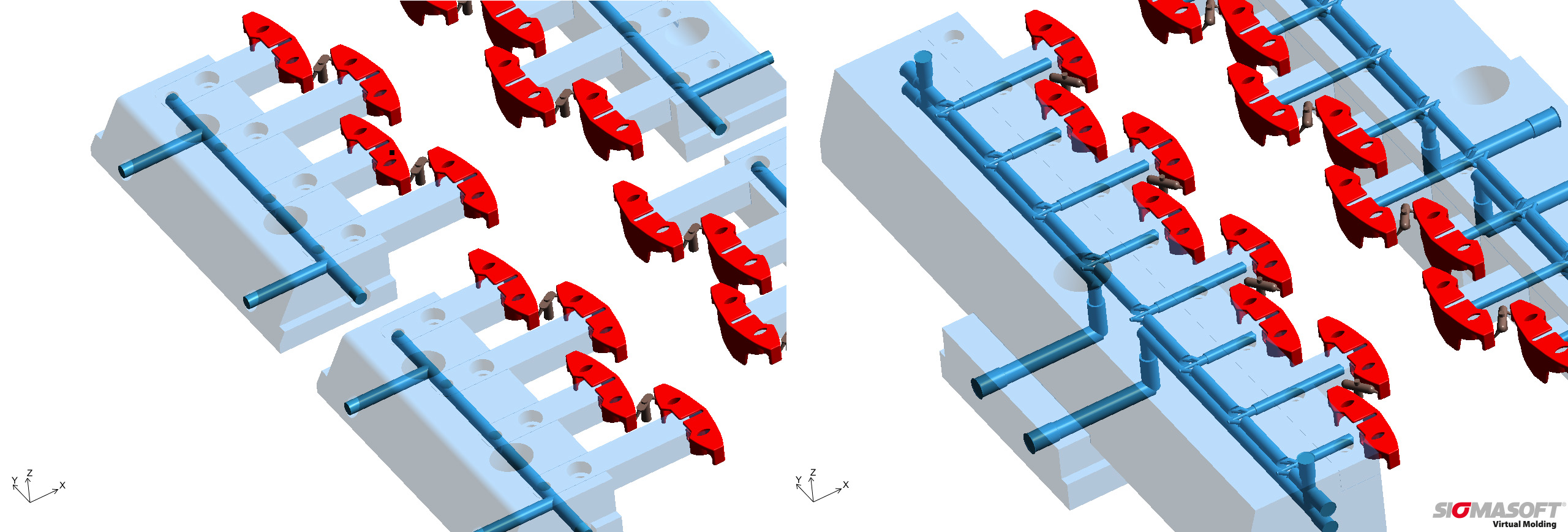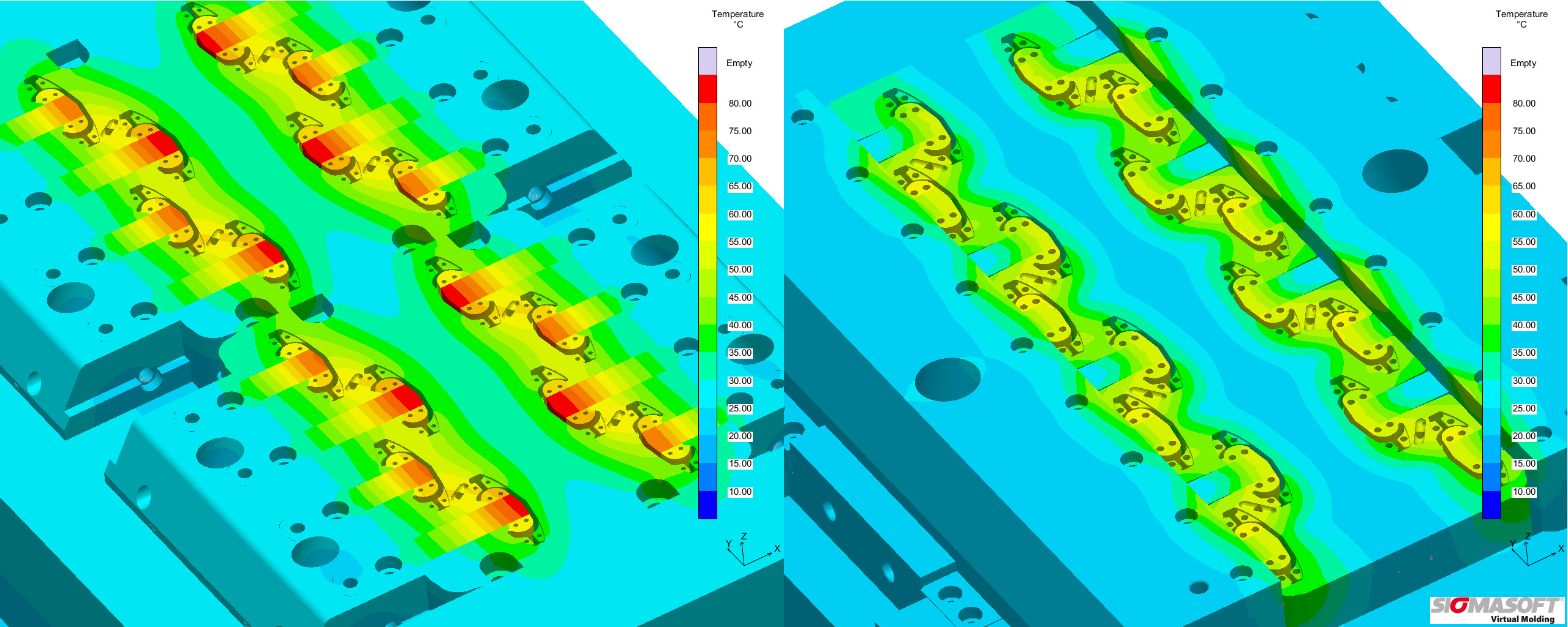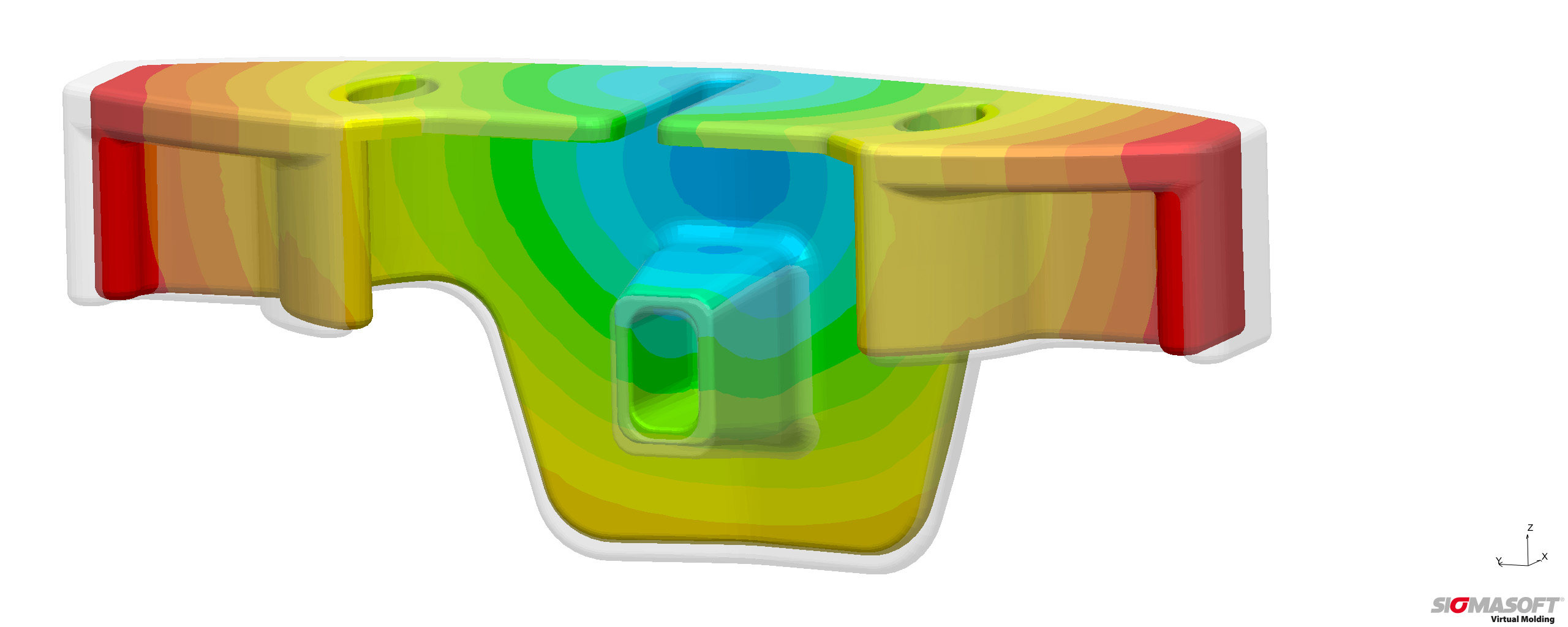Getting Warpage under Control
With Sigmasoft Virtual Molding, F. & G. Hachtel Manufactures Accurate Parts from the First Shot. “Think of it like this: the clip is bent when it leaves the machine, and you can see it straightening as it cools”, states Georg Schlöser. “And that is how we calculated it”, he adds satisfied, since he analyzed the required shrinkage allowance with Sigmasoft, so that the mold could deliver dimensionally true parts from the first shot.
Authors: Silke Allert, Vanessa Schwittay
First published in Kunststoffe international 12/2016, page 46-48


